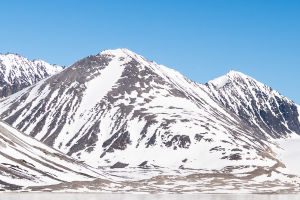Icebergs refer to large pieces of freshwater ice that break from the seaside of glaciers or polar ice sheets and fall into the sea to float. They are usually found in the Southern Ocean, the Arctic Ocean, and the Northwest Atlantic Ocean.
In April 2021, the "world's largest iceberg", code named A68, covering an area of nearly 6000 square kilometers near Antarctica, has melted and decomposed into many small icebergs, which is a natural phenomenon and has nothing to do with climate change caused by human activities.
Icebergs mostly form in spring and summer when warmer weather accelerates the splitting of glaciers or ice sheet edges. About 10000 icebergs are produced each year from glaciers in western Greenland alone. Where the glacier or ice sheet (shelf) meets the sea, the mutual movement of ice and sea water breaks the end of the glacier or ice sheet into the sea and becomes an iceberg. Another kind of glacier extends into the sea water, and the upper part melts or evaporates quickly, making it become an underwater ice shelf, which breaks and then surfaced.
The average age of icebergs is more than 5000 years. It can be said that they are clean ice without industrial pollution. Icebergs can last for 10 years at high latitudes, but if they leave the polar waters, they will disappear within a year or two. Because the main body of the iceberg is underwater, it mainly moves with the ocean current.
Icebergs can carry some objects on land, even living animals and plants, thousands of kilometers away from their source areas. Scientists can infer the distribution of glaciers 10000 years ago based on the sediments in the ocean. Icebergs pose a threat to navigation, and some exposed parts are too small to be found.
Icebergs are extremely valuable freshwater resources. Unfortunately, mankind has no way to use them yet.


